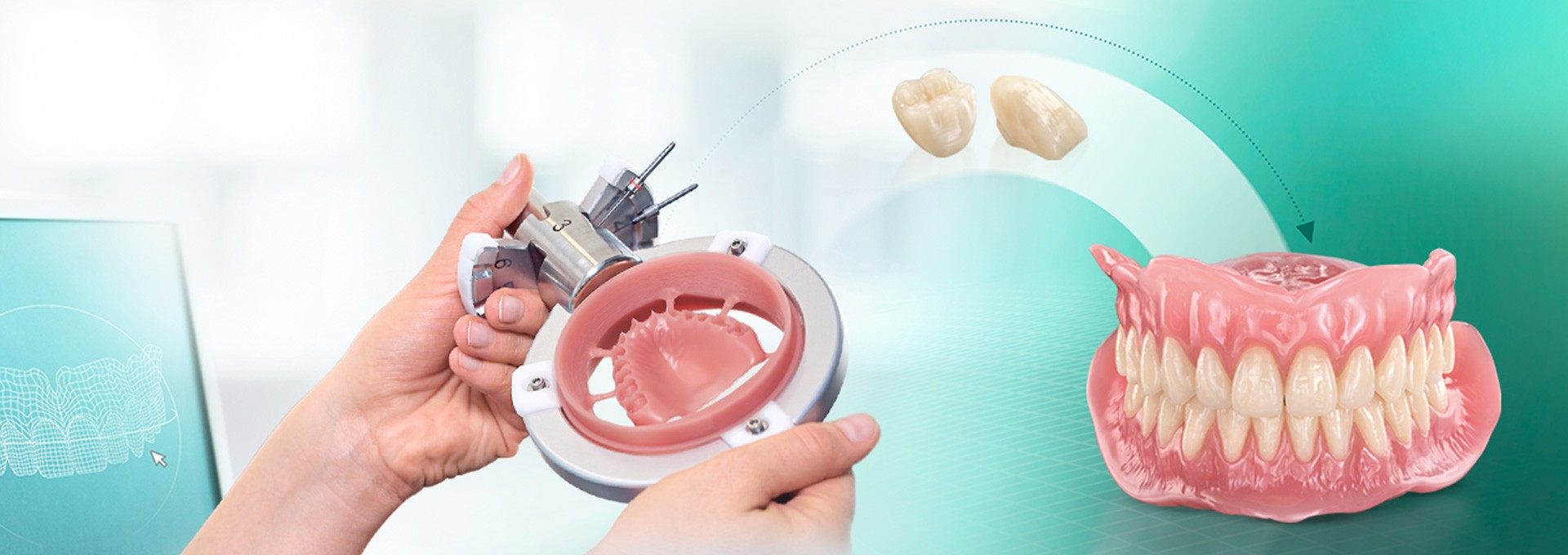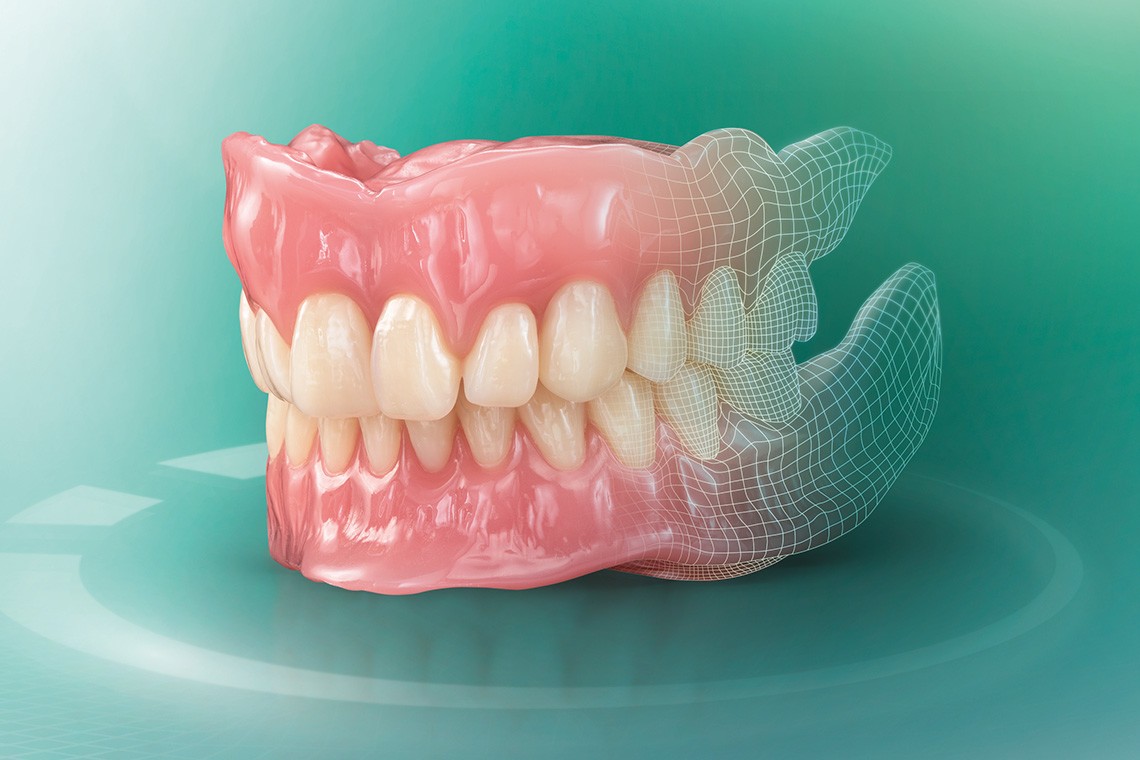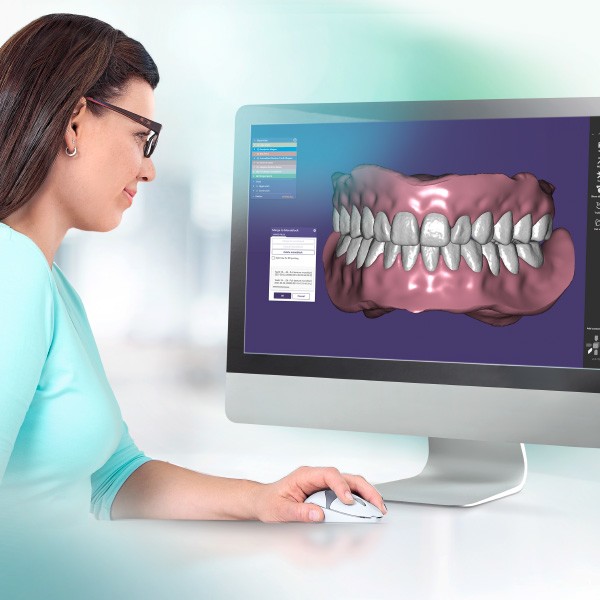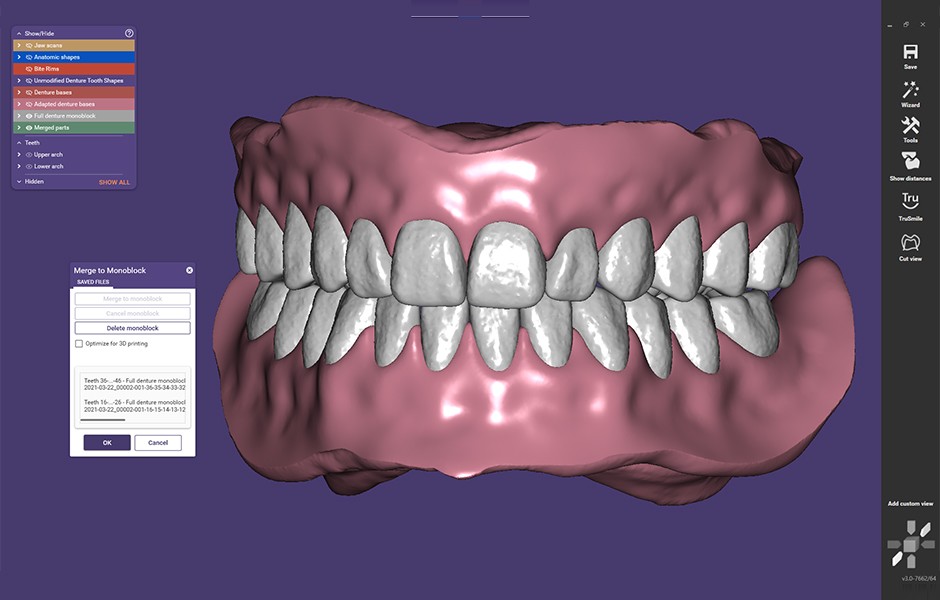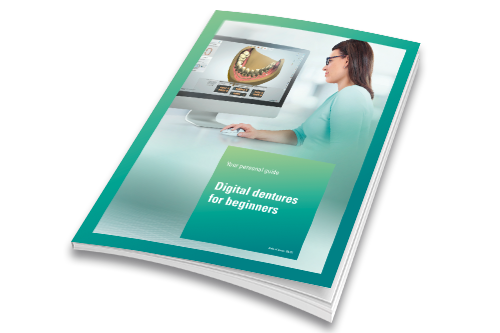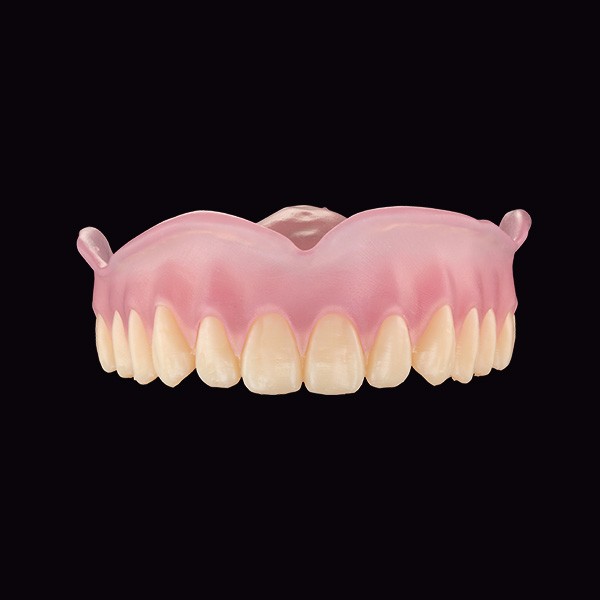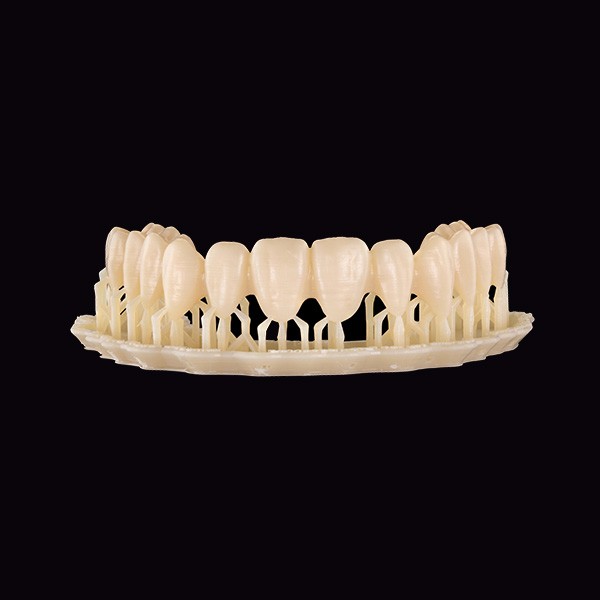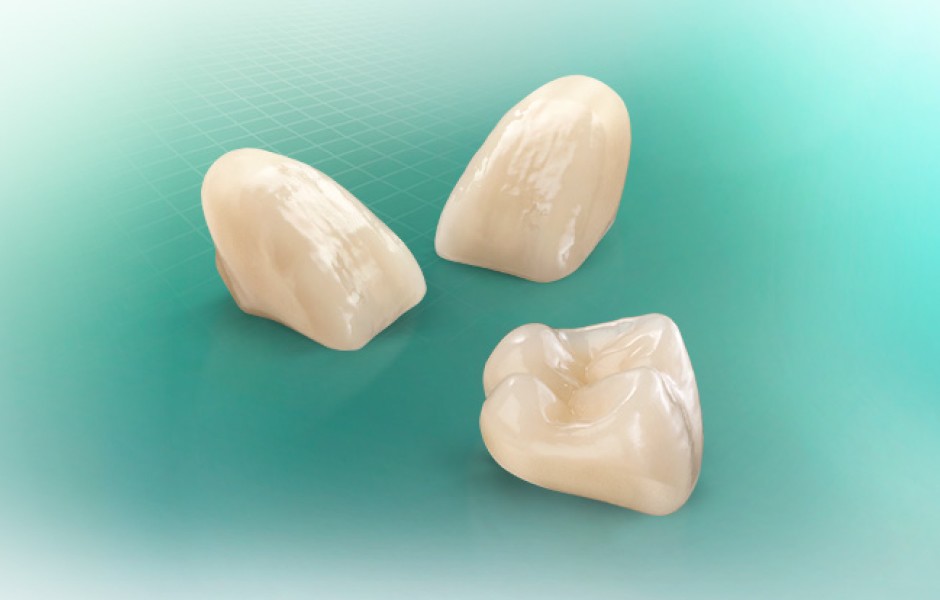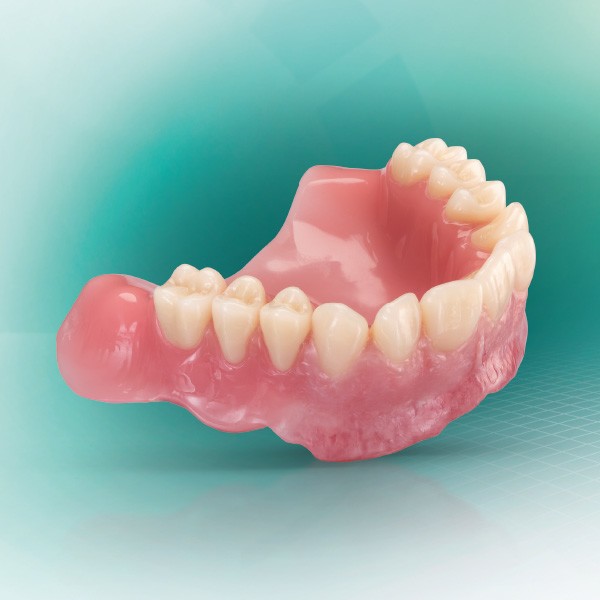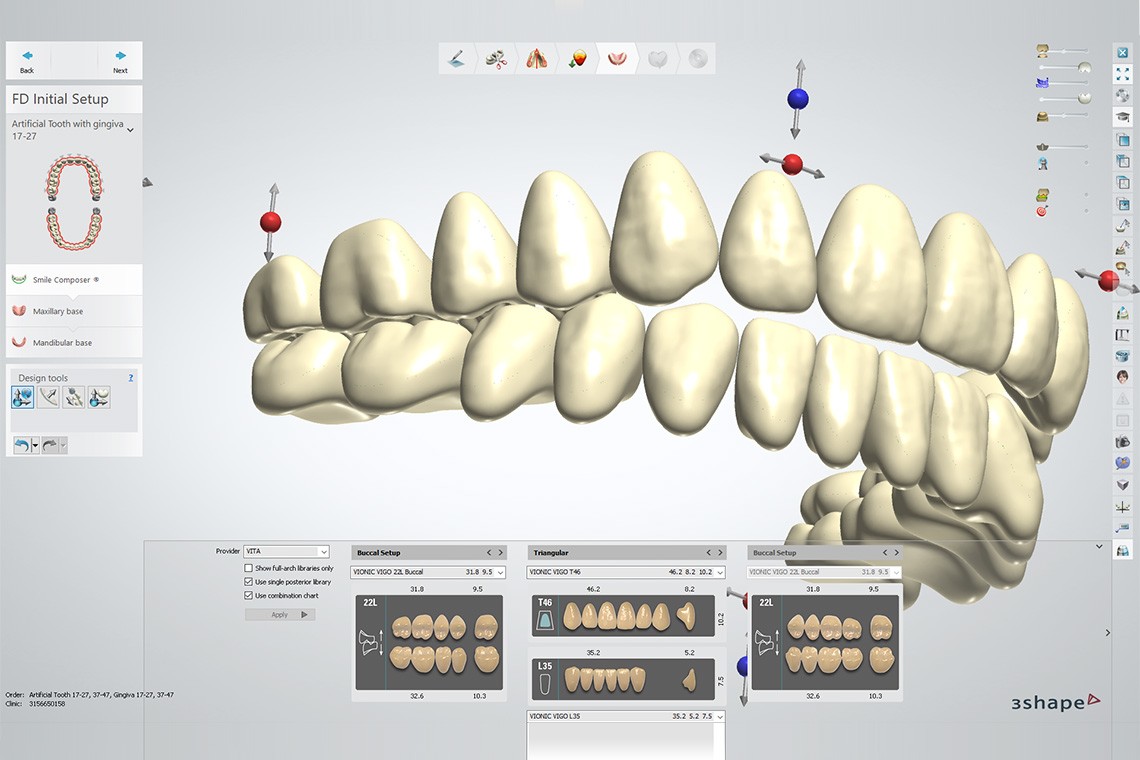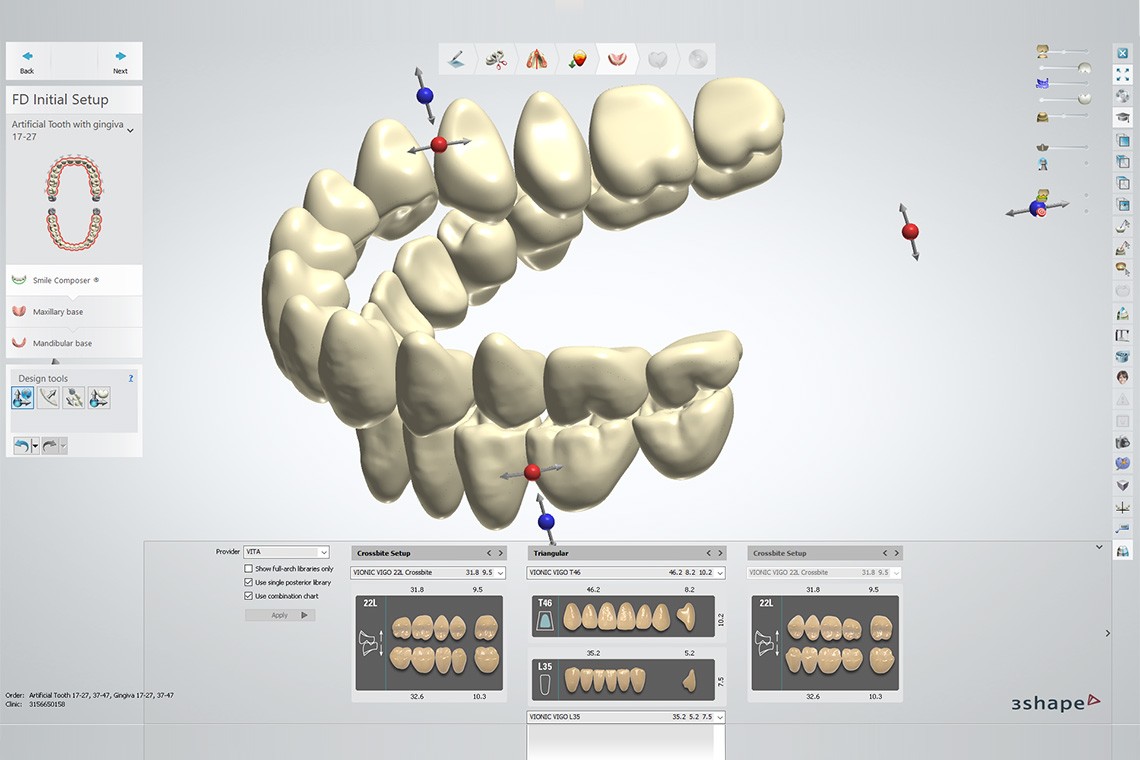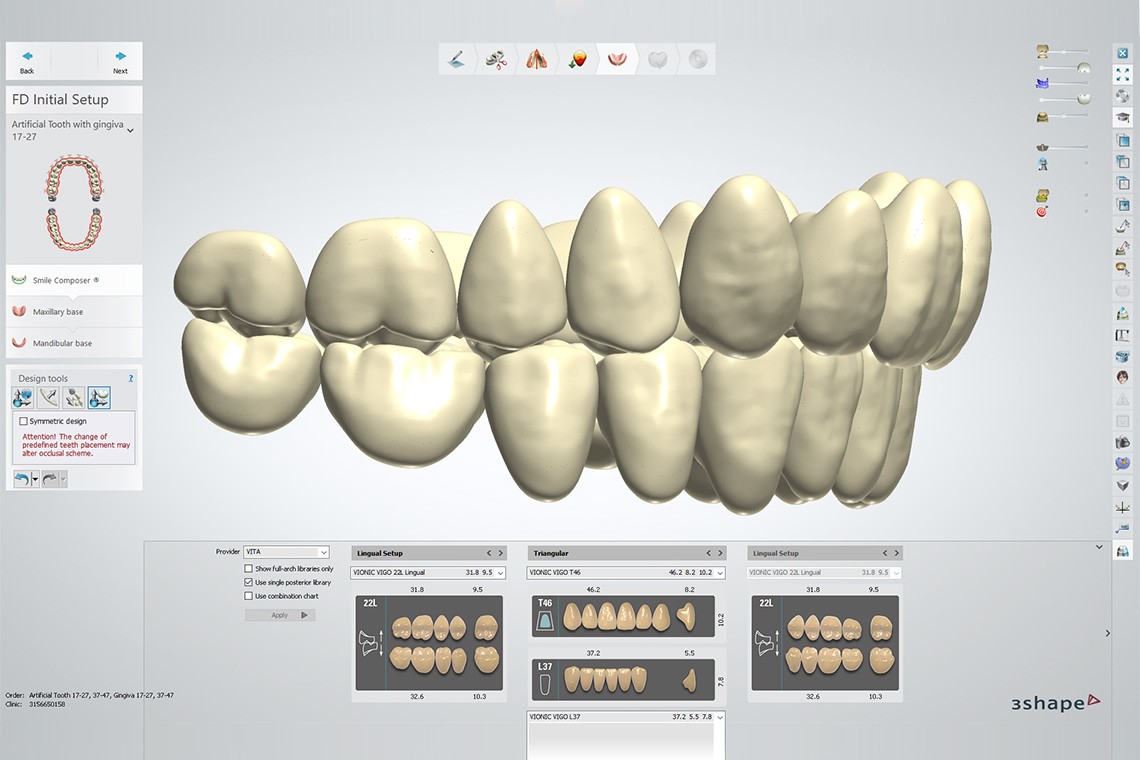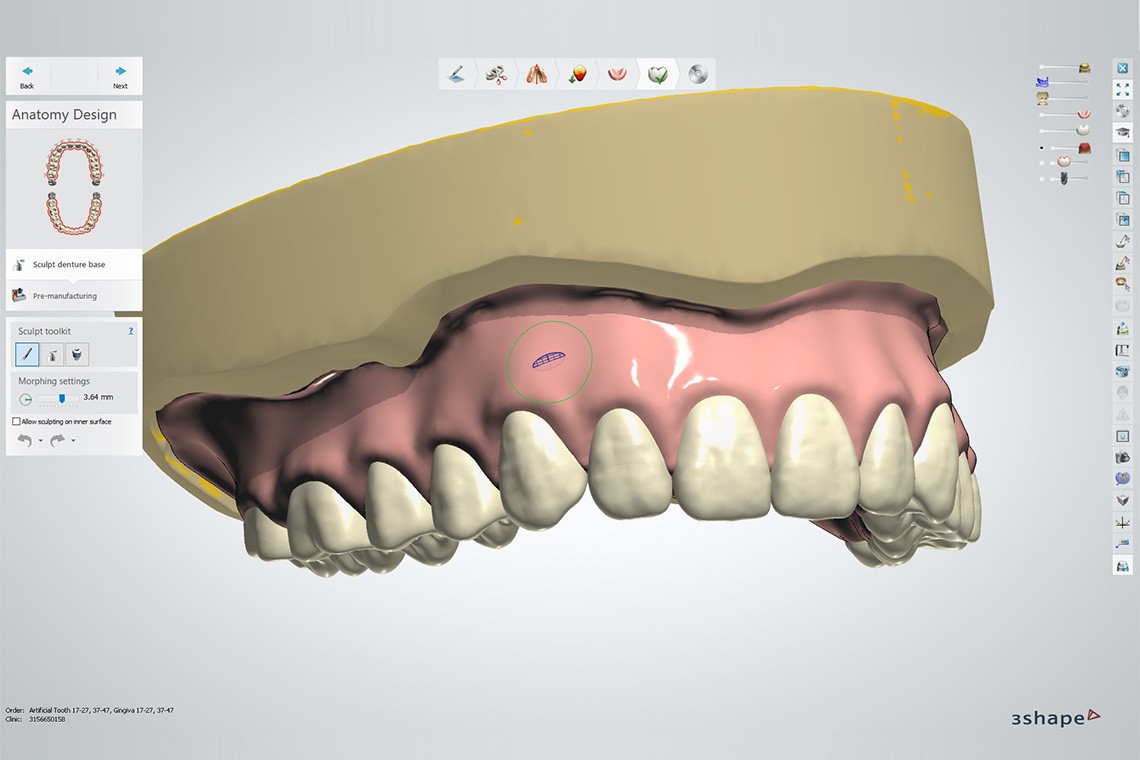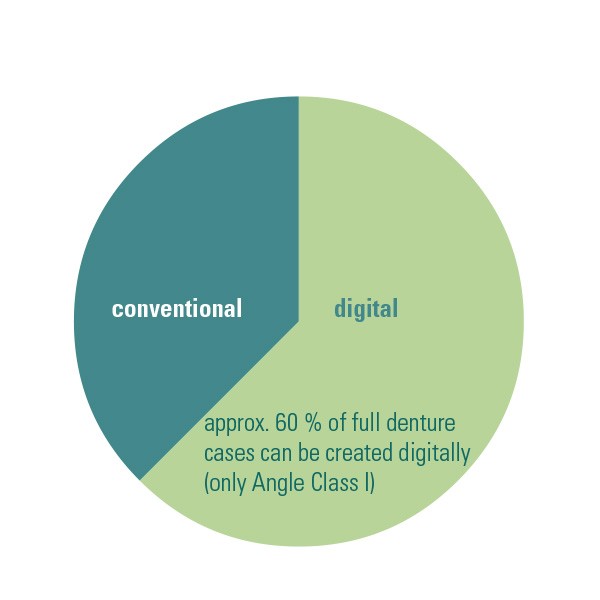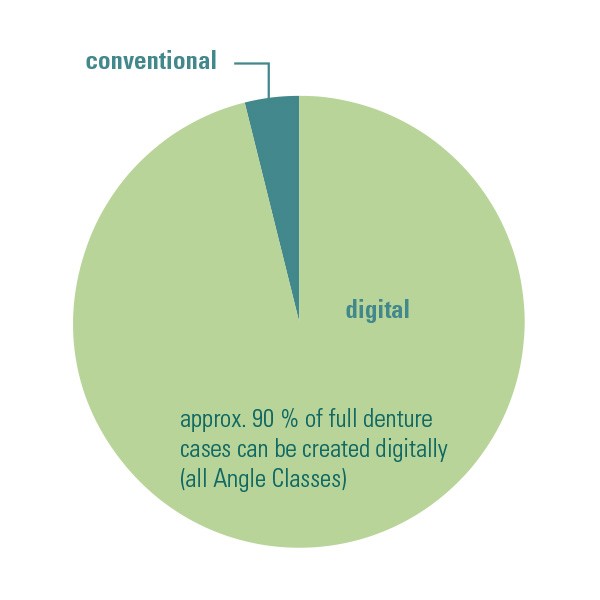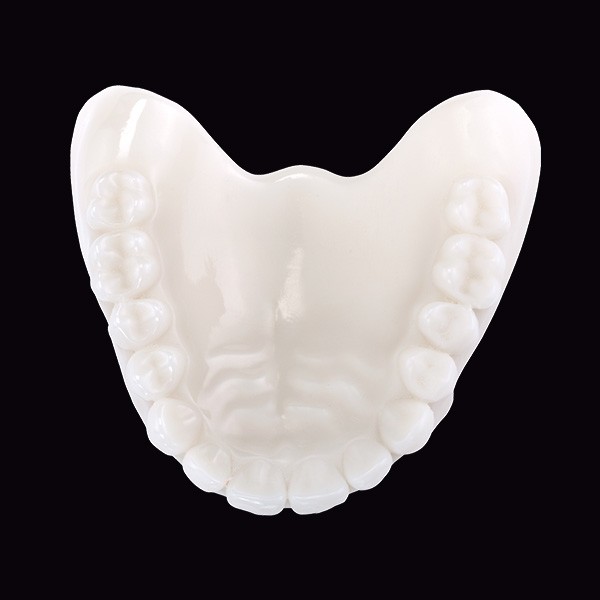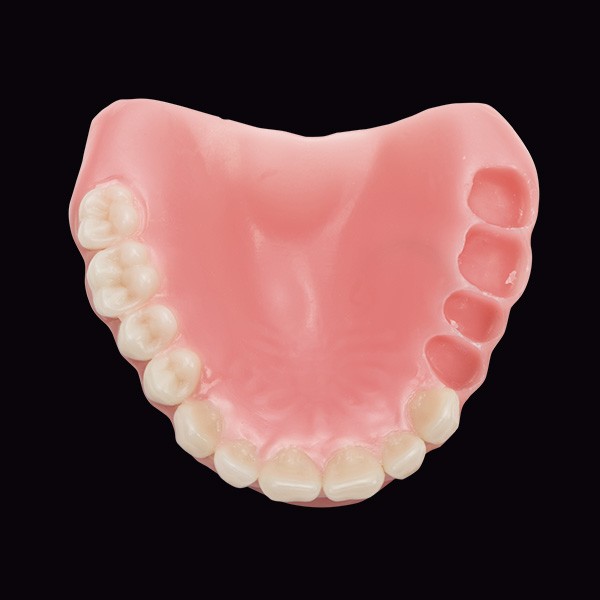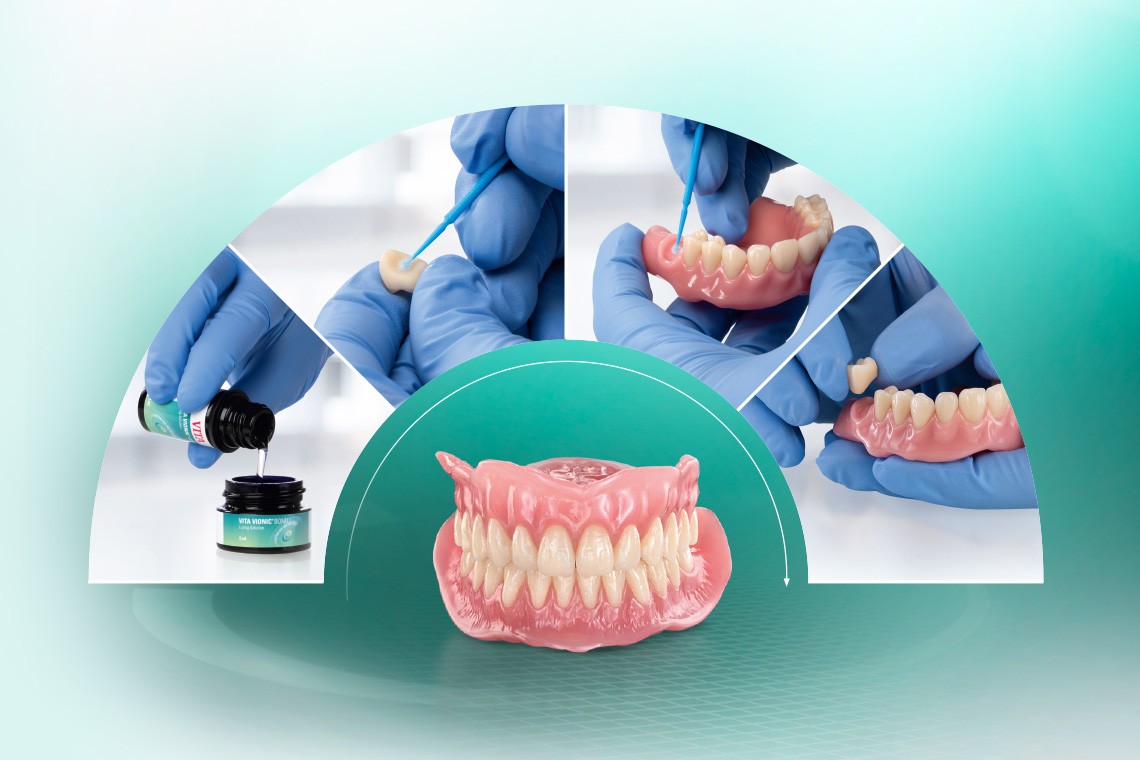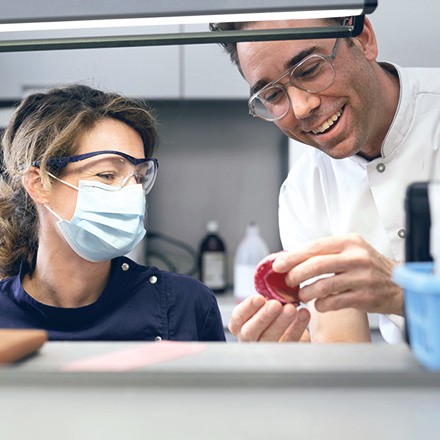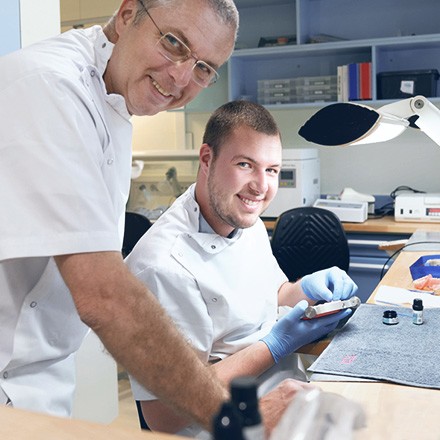Would you like to produce digital dentures in your dental laboratory? Learn what you need and how you can achieve good results in just a few steps.
Your entry into digital full dentures can be done conveniently and does not have to be complicated at all. With many digital procedures, you can continue to manufacture full dentures using the familiar, proven process. Often, with your CAD software and the CAM laboratory equipment (milling unit or 3D printer), you already have the necessary laboratory equipment to start immediately, without having to convert devices. Nevertheless, you may be unsure which procedure is suitable for your laboratory and how you can reliably achieve good esthetic results digitally. Don’t worry! In this report you will learn all about the advantages and disadvantages of the different procedures and how you can produce highly esthetic digital dentures in just a few steps.

